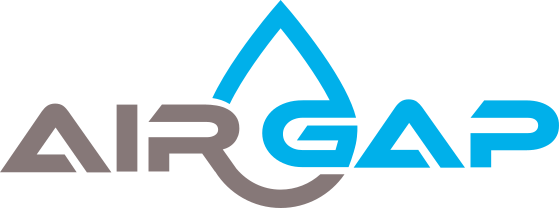What’s an Air Gap?
Air gaps are required by plumbing code to connect waste line of water treatment equipment to drain line. Their primary purpose is to prevent non-potable water from flowing backward, mixing with and contaminating potable (drinking) water. One could think of the function of an air gap as a no-fail check valve but without an internal seat or any moving parts. Properly designed and installed air gaps allow water to flow only in one direction.
The key characteristics of an air gap are protection from backflow and prevention of siphonage. Backflow occurs when there is a clog or downstream blockage in the drain line. More non-potable water entering the drain pipe causes the non-potable water to back up and reach the back siphonage critical level (C/L) of the air gap unit.
Back siphonage happens when there is suction in the potable water line and non-potable water backs into the potable (drinking) water line. An air gap protects potable water from backflow and back siphonage contamination.
An air gap is a physical separation in the drain line. All our air gaps, when properly installed, will protect potable water supply against backflow and siphonage.
